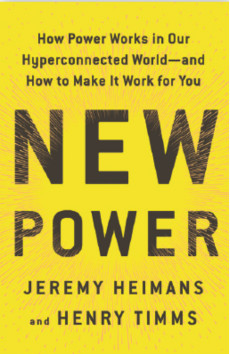As details emerged this spring about Cambridge Analytica’s mining of Facebook data to help manipulate elections around the world, it was easy to succumb to a feeling of powerlessness. It can seem insurmountable to drive change in an environment shaped by resources beyond the reach of anyone working to change the status quo. And yet, just as the public learned about Cambridge Analytica, a group of high school students from Parkland, Florida, captured the civic conversation on preventing gun violence. With few resources and without attachment to any organization, they have generated mass protests and brought millions of voices to bear on legislators and others whose decisions profoundly affect the availability of guns.
These two initiatives are more alike than they are different. Both are subverting traditional power structures to gain their own power and influence. One was extremely well funded, the other runs on the passion of grieving students. But both used the power of platforms to gain traction for their ideas.
New Power, written by Purpose CEO Jeremy Heimans and Giving Tuesday cofounder Henry Timms, helps us both to understand the moment unfolding around us and to navigate this new world. The term “new power” describes the participatory and peer-driven model of those who share control to drive influence. The authors liken it to an electric current, which is most effective when it’s channeled rather than hoarded. New power is characterized by radical transparency, a willingness to allow communities to reinvent or re-create content, shared control, and actionable ideas that people make their own rather than simply consume. It is not defined by social platforms like Facebook and YouTube, though ideas well designed to flourish in a new power world certainly transmit far more quickly on these platforms than through traditional and highly controlled media.
By contrast, old power refers to power that is held by a small group and inaccessible for the vast majority. Old power structures are hierarchical, discrete, and carefully guarded—the authors refer to them as castles. In these castles, power is a treasure—held by just a few and carefully protected. Castles are hierarchical and led by small groups who hold control and make key decisions.
According to Heimans and Timms, new power requires approaches that are actionable, connect to communities, and—perhaps most significantly—are extensible, meaning that they create an opportunity for communities to bring their own content and methods. Drawing from examples as seemingly disparate as the Ice Bucket Challenge, Donald Trump’s presidential campaign, and the techniques that the Islamic State group uses to recruit from online communities, the book illustrates the practical ways in which those who understand new influence models can attract others to their cause.
If your canon for fomenting social change includes Rules for Radicals, Here Comes Everybody, Made to Stick, and Switch, you have probably been craving an up-to-date version—a new road map for driving change in a world where power belongs not to small concentrated groups who fiercely protect it, but to those who share control and incite others to cocreate. Heimans and Timms have given us that, and with it a construct for understanding how new tools and the personalities that have arisen by using them are changing power dynamics.
New Power isn’t an indictment of old power, but it does suggest that those adhering solely to old power structures may be losing their influence as a result. We no longer live in a world where it is possible for a few to hold power. For those who came of age in old power structures or who have relied on them, experimenting with new power approaches will feel scary and risky. For younger generations who grew up in new power structures, such experimentation offers a way to use the platforms they’re already using to communicate with their friends as strategic tools that can help them achieve their goals.
The irony of the book is that new power is not new. Effective agents of lasting cultural and social change have often used the tools of new power to achieve their goals. The principles of new power were at the root of success in suffrage, the civil rights movement, and even the Revolutionary War. In each of these causes, communities without money, position, or elected office led radical social change by infecting others with their ideas and inviting them to take their own approaches to gain their own power and influence. Making change requires those without power to exert pressure on the institutions and individuals who hold it close. We live in a moment when the confluence of new platforms, a growing understanding of how to use them, and insights in behavioral science and growing differences throughout the world are leading us to a significant moment in social change. This book could be our road map.


